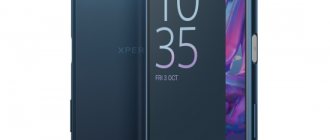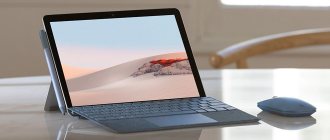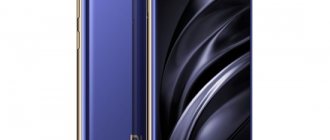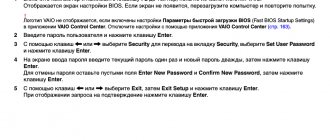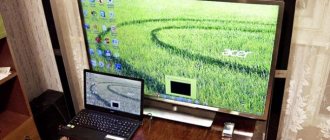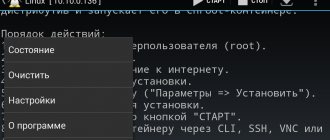When the question arises about choosing a compact, but at the same time productive laptop with small dimensions, then, along with classic-type models, you should definitely pay attention to the original Sony development. The VAIO family of mobile computers now includes a very unusual device, the Sony VAIO Duo 11 hybrid ultrabook, which went on sale simultaneously with the announcement of the new version of Windows.
The peculiarity of this non-trivial idea is that we have a large slider. A similar design could previously be found in business-class phones, but now such a non-standard concept has come to the world of portable PCs. The original opening mechanism has its own name, Surf Slider, which reflects the essence of the spectacular idea. "Surf" can be perceived as an abbreviation for the word "surface", that is, "surface". In other words, a “sliding surface.” The convenience of this approach is that an ultrabook easily turns into a tablet and back, such are the miracles of transformation. The choice of devices to work with with the advent of Windows 8 has become noticeably wider. The new operating system helps manufacturers experiment with different types of cases to create original products. Sony has been trying out unusual concepts for years; just remember models like the VAIO P or the Android tablet Sony Tablet P.
Specifications Sony VAIO Duo 11
- Processor: Intel Core i5-3517U
- Video: Intel HD Graphics 4000
- Memory: SSD 256 GB
- RAM: 8 GB
- Screen: OptiContrast 11.6 inches, TFT-IPS, 1920 x 1080, capacitive sensor, 16:9
- Operating system: Windows 8 Pro, 64 bit
- Connectivity: Bluetooth 4.0, Wi-Fi (IEEE 802.11 b/g/n), Wi-Di
- Ports and connectors: miniHDMI, RJ-45, 2xUSB 3.0, 3.5 mm audio output
- Cameras: 2 MP front, 2 MP main
- Battery: 4960 mAh
- Dimensions: 320 x 17.85 x 199 mm
- Weight: 1.3 kg
- Price: from 49,990 to 79,990 rubles
Ultrabook tablet Sony VAIO Duo 13 SVD1321M2RW
The world's most expensive 13-inch hybrid ultrabook with tablet functions Hybrid devices that combine the functions of a laptop/ultrabook and tablet are available in the range of almost all laptop manufacturers. Structurally, such hybrid devices may look different. The most common types of construction are:
- laptops with a detachable screen that can be used separately as a tablet (for example, Asus VivoTab TF810C).
- sliders that when folded are a tablet, but the slider design allows you to extend the keyboard and tilt the screen relative to it (for example, Toshiba Satellite U920t-D4S).
- laptops with a hinged screen system, which allows you to transform the laptop into a tablet (for example, Lenovo Thinkpad Twist S230u).
Sony also announced the Sony VAIO Duo 13 13-inch hybrid ultrabook tablet with a body design called the Surf Slider. Judging by the name, we are talking about a slider design of the case, however, in our opinion, this is not a slider, but a completely new design that allows you to transform an ultrabook into a tablet. However, let’s not get ahead of ourselves and tell you about everything in order.
On the company's website, this device is positioned as a thin and light hybrid laptop with the functions of a tablet computer. But we would shift the emphasis a little and position it precisely as a tablet with the functions of a laptop (more precisely, an ultrabook). That is, it is primarily a tablet, and secondarily an ultrabook. Well, why we think that the Sony VAIO Duo 13 is a tablet with the ability to transform it into an ultrabook, you will learn from this article.
According to established tradition, we will start with a review of the Sony VAIO Duo 13 hybrid tablet and take a detailed look at its configuration, configuration and design. In the future, we will consider the SVD1321M2RW model, which is sold on the Russian market.
Options and packaging
The Sony VAIO Duo 13 hybrid tablet comes in a fairly compact black cardboard box. In addition to the hybrid tablet itself, a 45 W charger (10.5 V, 3.8 A) is supplied, at the end of which there is a USB connector that can be used to charge various mobile gadgets (voltage 5 V, maximum current 1 A). In addition, the package includes a miniature wireless router Sony VGP-WAR100 with a USB connector and an RJ-45 connector, which connects to the ultrabook charger via the USB interface and when connected it is like an extension of the charger.
Inside the Sony VGP-WAR100 router there is a wireless module that supports the 802.11n protocol. Actually, this solution is intended for those cases when it is not possible to connect the Sony VAIO Duo 13 to the Internet via Wi-Fi directly, but it is possible to use a wired connection. In fact, such a router compensates for the lack of an RJ-45 connector in a hybrid tablet.
In addition to the router, the package also includes an HDMI-D-Sub (VGA) adapter, which can be useful in cases where the ultrabook needs to be connected to an external monitor or projector via an outdated VGA interface. It is clear that it is simply impossible to place a VGA connector on the body of the hybrid tablet itself, since the body is quite thin.
The package also includes a Digitizer stylus, which is designed primarily for working with the Sony VAIO Duo 13 in tablet mode.
Hybrid tablet configuration
According to information on the Russian website of Sony, hybrid ultrabook-tablets of the Sony VAIO Duo 13 series are equipped with dual-core Intel Core i5-4200U or Intel Core i7-4500U processors with an integrated graphics core Intel HD Graphics 4400. An SSD with a capacity of 128, 256 can be used as a drive. or 512 GB, and the amount of DDR3 RAM integrated on the motherboard is 4 or 8 GB.
The Sony VAIO Duo 13 series hybrid ultrabook-tablets come pre-installed with the Windows 8 (64-bit) operating system, and you can download drivers for this operating system on the technical support website.
Well, now let’s look at the detailed configuration of the hybrid ultrabook-tablet Sony VAIO Duo 13 SVD1321M2RW, which we tested. Note that this is the minimum configuration, which is cheaper
the rest in this line (we'll talk about the insane cost of this device later).
The specifications of Sony VAIO Duo 13 SVD1321M2RW are given in the table.
| Sony VAIO Duo 13 SVD1321M2RW | |||
| CPU | Intel Core i5-4200U | ||
| Chipset | N/A | ||
| RAM | 4 GB DDR3-1600 (integrated on board) | ||
| Video subsystem | Intel HD Graphics 4400 | ||
| Screen | 13.3 inches, IPS, 1920×1080, touch (Panasonic MEI96A2) | ||
| Sound subsystem | Realtek ALC282 | ||
| Storage device | Samsung SSD MZNTD128HAGM-00000 (128 GB) | ||
| Optical drive | No | ||
| Card reader | Memory Stick Duo/SD | ||
| Network interfaces | Wired network | No | |
| Wireless network | Broadcom 802.11abgn | ||
| Bluetooth | Bluetooth 4.0 | ||
| WWAN module | Huawei ME906E (LTE, HSPA+, UMTS, EDGE/GPRS) | ||
| Interfaces and ports | USB (2.0/3.0) | 0/2 | |
| DisplayPort | No | ||
| HDMI | yes, 1.4 | ||
| RJ-45 | No | ||
| Headphone output | yes (combined) | ||
| Microphone input | yes (combined) | ||
| Input Devices | Keyboard | island type with lighting | |
| Touchpad | clickpad with MultiTouch function | ||
| IP telephony | Webcam | front and rear (3280×2464; 8.08 MP) | |
| Microphone | There is | ||
| Additionally | GPS function | There is | |
| NFC function | There is | ||
| Accelerometer | There is | ||
| Stylus | There is | ||
| Battery | Lithium polymer (50030 mWh) | ||
| Dimensions | 330×210×19.5 mm | ||
| Weight without power supply | 1.343 kg | ||
| Power adapter | 45 W (10.5 V 3.8 A) | ||
| operating system | Windows 8 (single language) | ||
The basis of this hybrid device is a dual-core Intel Core i5-4200U processor with reduced power consumption (U-series). This processor has a nominal clock speed of 1.6 GHz, which can be boosted up to 2.6 GHz in Turbo Boost mode. The L3 cache size is 3MB and the TDP of this processor is only 15W.
The Core i5-4200U integrates an Intel HD Graphics 4400 graphics core with a base frequency of 200 MHz and a Turbo Boost frequency of 1 GHz.
The hybrid ultrabook-tablet Sony VAIO Duo 13 SVD1321M2RW integrates 4 GB of DDR3-1600 RAM, and the memory modules are soldered on the board and cannot be replaced.
The storage subsystem is based on a Samsung MZNTD128HAGM SSD drive with a capacity of 128 GB.
The communication capabilities of the Sony VAIO Duo 13 SVD1321M2RW are determined by the presence of a wireless dual-band (2.4 and 5 GHz) Broadcom 802.11abgn network adapter. This module complies with IEEE 802.11a/b/g/n specifications, and the maximum data transfer rate is up to 300 Mbps. In addition, this module is compatible with Bluetooth 4.0 module.
As already noted, the Sony VAIO Duo 13 SVD1321M2RW ultrabook does not have a wired network interface, but it is replaced by a wireless router connected to the power adapter.
Also, the hybrid ultrabook-tablet Sony VAIO Duo 13 SVD1321M2RW has an NFC module and a built-in Huawei ME906E WWAN modem (LTE, HSPA+, UMTS, EDGE/GPRS), designed for installing Micro-SIM cards.
There are also two cameras: front and rear. The front camera is located centrally above the screen and is designed for IP telephony, while the rear camera is used in tablet mode and provides a photo resolution of 3280x2464.
As we have already noted, the Sony VAIO Duo 13 SVD1321M2RW hybrid has tablet-specific functions such as an accelerometer and a GPS module.
Appearance and ergonomics of the case
The body of the hybrid tablet-ultrabook Sony VAIO Duo 13 is available in two colors - black and white-silver. In the future, we will describe the white and silver model of this device.
The lower part of the Sony VAIO Duo 13 body is made of silver plastic reinforced with carbon fiber. On the bottom of the case there are (on the sides) two ventilation grilles, a rear camera and an NFC module area.
On three sides, the rear surface is slightly beveled, which is very convenient when working with the device in tablet mode. One beveled surface is a decorative mesh, behind which, on the sides, are built-in stereo speakers. In addition, there are three buttons on this grid. Two buttons are designed to adjust the volume, and the third is the Assist button, traditional for Sony devices. Clicking on this button launches the proprietary VAIO Care program, which allows you to configure the ultrabook tablet. Well, if you press this button when the device is off, the VAIO Care utility will automatically load in rescue mode (that’s what this mode is called) without loading the operating system. In this mode, you can enter the BIOS or restore Windows (return to factory settings).
On the left side of the device (from the front side) there is only one button - power.
On the right side there is a retractable frame with a hole in which you can put a stylus (just so that it doesn’t get lost).
If you look at the Sony VAIO Duo 13 from above, it looks like a regular tablet. The frame around the screen is white, at the top, in the center of the frame, is the front webcam, and at the bottom, in the center of the frame, is the traditional Windows button.
All connectors of this hybrid ultrabook-tablet are located on the rear side edge of the case. There are not many connectors: two USB 3.0 ports, an HDMI connector, a memory card slot, a combined minijack audio connector (headphones, microphone) and a connector for connecting a power adapter. Note that one of the USB 3.0 ports supports the function of charging mobile gadgets (this function can be enabled in the VAIO Care utility).
As already noted, although the design of the Sony VAIO Duo 13 case is called Surf Slider, such a design cannot be called a slider. Still, a slider involves sliding one surface over another (when the keyboard seems to slide out from under the screen). In the Sony VAIO Duo 13 version, the transformation of a tablet into a laptop occurs differently. In this case, a spring-loaded mounting strip (let's call it that) is attached to the body, near the rear end, on an axial hinge recessed into the surface of the body. This bar, like a door hinge, can be rotated at an angle of 90° relative to the hinge axis. On the other hand, this bar has an axial hinge connection with the screen, and this connection is located approximately in the center of the screen.
When the device is in tablet mode, the screen and body form a sandwich, held in place by a mounting bar located between them. But if you start to lift the screen relative to the body (to do this, just pick up the screen with one finger), then the spring-loaded bar rotates at an angle of 90°, dragging the screen with it. Two miniature hooks located on the sides of the case allow you to fix the bottom of the screen, while the center of the screen is fixed with a mounting strip.
It must be admitted that this design is very original from an engineering point of view, but has a huge drawback from the user’s point of view.
The thing is that this design implies strict fixation of the position of the screen relative to the body. The screen is tilted at an angle of 130° and the tilt of the screen cannot be changed. And it turns out that you don’t adjust the angle of the screen to suit you, but you have to adapt to a fixed angle of inclination. This is, of course, very inconvenient. However, this is not the only drawback of this hybrid in ultrabook mode.
The surface framing the touchpad and keyboard is the same silver color as the back of the case.
The keyboard in this laptop is also silver (does not differ in color from the body), but we will tell you in detail about it, as well as about the touchpad, a little later.
The dimensions of the Sony VAIO Duo 13 hybrid are 330x210x9.2-19.5 mm. That is, the maximum case thickness is less than 20 mm, and according to this criterion, this device meets the ultrabook specification.
Well, the weight of this ultrabook tablet is 1.343 kg. For an ultrabook this is quite a bit, but for a tablet it’s a bit much. You can’t hold such a tablet for a long time not only in one, but even in two hands. Well, this is the price for versatility. Any attempt to combine several devices into one inevitably leads to deterioration in the performance of each device separately. And an attempt to crossbreed an ultrabook with a tablet is always doomed to result in a heavy and therefore ineffective tablet and an ultrabook that is inconvenient for normal operation.
Input Devices
Keyboard
The Sony VAIO Duo 13 ultrabook uses the now traditional island-type keyboard with an increased distance between the keys. The main keys on the keyboard have a slightly non-standard size of 14.8x13.3 mm, but this is almost invisible, and the keys look like the most ordinary ones. But the function keys are noticeably smaller than usual: their dimensions are 13x8 mm. The keys themselves are plastic and painted the same silver color as the surface framing the keyboard.
Note that the keyboard has a backlight, which can be configured in the VAIO Care program. The backlight can be turned off or on, or you can set it to automatic mode, when the backlight turns on depending on the ambient lighting conditions. In addition, you can configure the keyboard backlight separately for battery mode and for mains power.
The keyboard in this laptop can be considered, on the one hand, good, but on the other, unsatisfactory. In terms of workmanship, there are no complaints about the keyboard. It hardly flexes, and the keys do not click. True, the travel of the keys themselves is very small, and the locking of the key press is difficult to feel. However, this is, of course, a matter of habit.
But a much more serious drawback of this keyboard is that it lacks a palm rest. When typing, the palms rest on the edge of the body, which, of course, is very inconvenient.
| Keyboard Specifications | |
| Number pad | No |
| Availability of backlight | There is |
| Layout | optimal |
| Feelings from printing | good |
| General impression | unsatisfactory |
Touchpad
The Sony VAIO Duo 13 ultrabook uses a clickpad that simulates key presses. The dimensions of the working area of this clickpad are 80.8×25.6 mm. In principle, all further discussions regarding sensitivity, etc. are simply meaningless. Given the size of the workspace, this clickpad is completely non-functional. It is very inconvenient to work with him.
| Touchpad characteristics | |
| Touchpad size | 80.8×25.6 mm |
| Multi-touch function | There is |
| Type | clickpad |
| Sensitivity | good |
| Random activations | there are |
| General impression | unsatisfactory |
Sound path
According to subjective feelings, the acoustics in this ultrabook are quite good. The volume level is quite sufficient, and the sound quality will satisfy most users.
To test the output audio path intended for connecting headphones or external speakers, we will use instrumental testing using an external Creative E-MU 0204 USB sound card and the RightMark Audio Analyzer 6.3.0 utility. Testing was carried out in stereo mode, 24 bit/44.1 kHz.
According to the test results, the audio path in the Sony VAIO Duo 13 ultrabook is generally good.
A full report on the test results in the RMAA 6.3.0 program is presented on a separate page.
General results
| Frequency response unevenness (in the range 40 Hz - 15 kHz), dB | +5,51, −12,72 | Very bad |
| Noise level, dB (A) | −96,5 | Great |
| Dynamic range, dB (A) | 96,8 | Great |
| Harmonic distortion, % | 0,0050 | Very good |
| Harmonic distortion + noise, dB(A) | −69,7 | Average |
| Intermodulation distortion + noise, % | 0,016 | Very good |
| Interpenetration of channels, dB | −15,3 | Very bad |
| Intermodulation at 10 kHz, % | 0,078 | Fine |
| Overall rating | Fine | |
Screen
So, let us recall that the Sony VAIO Duo 13 has a 13-inch IPS touch matrix (Panasonic MEI96A2) with a resolution of 1920 × 1080.
According to measurements, the maximum screen brightness in the Sony VAIO Duo 13 ultrabook on a white background is 335 cd/m², and the maximum brightness on a black background is 0.31 cd/m². At maximum screen brightness, the contrast is 1096:1 and the gamma value is 2.24.
The minimum screen brightness that can be set is 2.51 cd/m² on a white background, and 0 cd/m² on a black background. At minimum screen brightness, the gamma value is 2.24.
| Screen test results | |
| Maximum white brightness | 335 cd/m² |
| Minimum white brightness | 2.51 cd/m² |
| Contrast (at maximum brightness) | 1096:1 |
| Gamma | 2,24 |
The color gamut of the laptop LCD screen covers 87.8% of sRGB and 64.2% of Adobe RGB, and the color gamut is 103.5% of sRGB and 71.3% of Adobe RGB. In principle, this is a very good result.
The emission spectrum of the matrix is quite typical. The blue color is well isolated from the rest, and the green and red color filters are not very high quality and slightly mix the components with each other. Also noteworthy are the slightly thicker spectra of green and red colors.
The color temperature of the laptop's LCD screen is quite stable, but it is below 6000 K on almost the entire gray scale. And only in dark areas (less than 10% white) is there an increase in color temperature, but this is absolutely not critical.
An increase in the value of color temperature in dark tones, as well as a slightly lower color temperature, is due to the fact that in dark areas on the gray scale the proportion of blue increases and the proportion of red decreases. In addition, across the entire gray scale, the proportion of blue is slightly underestimated.
As for color rendering accuracy (delta E), its value across almost the entire gray scale (except for the dark area) does not exceed 6, which is a good result.
If we talk about the viewing angles of the screen, they are very good. When looking at the image at an angle horizontally and vertically, the color is not distorted and the brightness is only slightly reduced.
Work under load and in idle mode
In idle mode, as it should be, the processor frequency in the Sony VAIO Duo 13 ultrabook is 800 MHz (naturally, we are talking about a balanced power consumption scheme), that is, there are no complaints about Intel SpeedStep technology. At the same time, the processor temperature in idle mode is no more than 42 °C, which can be considered a very good result.
When the processor is loaded with the Stress CPU test (AIDA64 Extreme Edition utility, system stability test), which uses integer calculations, the processor frequency is 2.3 GHz (remember that for the Intel Core i5-4200U processor the maximum frequency in Turbo Boost mode is 2. 6 GHz). The processor temperature in this boot mode does not exceed 60 °C. In principle, this should be the case, since in this case all processor cores are loaded, and the maximum frequency in Turbo Boost mode is achieved when only one core is loaded and the requirements for power consumption and processor temperature are not exceeded.
When the processor is loaded with the Stress FPU test, which uses floating point calculations and heats up the processor to a greater extent, the established processor frequency is 2.3 GHz, and its temperature does not exceed 68 ° C. It is perhaps worth noting here that in the Sony VAIO Pro 13 ultrabook on the same Intel Core i5-4200U processor, the behavior during stress loading with the Stress FPU test is somewhat different. Thus, in the Sony VAIO Pro 13, the processor in this test heats up to 80 °C, after which the processor frequency decreases to 1.6 GHz. That is why, despite almost the same “filling”, due to the different implementation of the Turbo Boost mode, the Sony VAIO Duo 13 ultrabook tablet turns out to be slightly more productive than the Sony VAIO Pro 13 ultrabook.
When loading the graphics core (Stress GPU), the maximum temperature of the processor cores is about 55 ° C. In this case, the processor cores are absolutely not loaded, and their frequency is 800 MHz.
Noise level
The Sony VAIO Duo 13 ultrabook can be classified as very quiet. In fact, you can never hear him at all.
According to our measurements, the noise level emitted by the laptop in idle mode is 20.5 dBA (measurement was carried out in a special sound-absorbing chamber, and the sensitive microphone was positioned relative to the laptop so as to simulate the typical position of the user's head). It should be noted that this is such a low noise level that it merges with the level of the natural background, and it is simply impossible to “hear” the laptop in this mode.
When the processor is under stress, the noise level emitted by the laptop increases to 33 dBA. This noise level is also quite difficult to hear. That is, of course, you can hear, but this will require a room in which there would be perfect silence.
| Load scenario | Noise level |
| Idle mode | 20.5 dBA |
| CPU stress | 33 dBA |
Note that the proprietary VAIO Care utility allows you to adjust the speed mode of the cooling system fan. There are three operating modes: quiet, balanced and maximum performance mode. When testing the noise level, a balanced fan mode was used.
Battery life
According to the AIDA diagnostic utility, the Sony VAIO Duo 13 uses a battery with a capacity of 50,030 mWh. However, from the user’s point of view, it is not so much the battery capacity that is important, but the battery life of the ultrabook.
To measure the ultrabook's battery life, we used two boot scenarios: operating mode and HD video viewing mode. During testing, the power consumption mode was set to “Balanced”, the screen brightness was set to 120 cd/m² (40% of maximum), and the wireless communication module was turned off.
In video viewing mode (Media Player Classic player), a video with a resolution of 1920x1080 and a bitrate of 41.1 Mbit/s (AVC codec) was used. In the script mode, the user simulated typing in a text editor and viewing photos in slide show mode using Windows Photo Viewer. The test results are as follows:
| Load scenario | Working hours |
| Watch video | 3 hours 24 minutes |
| Working with text and viewing photos | 8 hours 48 minutes |
As you can see, the battery life of the Sony VAIO Duo 13 hybrid laptop is very long. This tablet-laptop is enough for watching movies for three and a half hours or for “office work” throughout the working day.
Performance Research
To evaluate the performance of the Sony VAIO Duo 13 SVD1321M2RW, we traditionally used several popular benchmarks: PCMark 8 v.1.0.0, PCMark 7 v.1.4.0, 3DMark v.1.1, 3DMark 11 v.1.0.5.0. The operating system Windows 8 (64-bit) was used during testing.
All tests were run five times, and the average value and measurement error were calculated from the results.
In addition, in order to give the “parrots” obtained in the tests a real meaning, we will compare them with the results of a reference ultrabook based on a previous generation processor (Ivy Bridge).
The compared systems had the following configurations:
| Configuration | Sony VAIO Duo 13 SVD1321M2RW | Reference platform |
| CPU | Core i5-4200U | Core i5-3317U |
| Chipset | Intel 8 series | Intel HM77 Express |
| Memory | 4 GB DDR3-1600 | 4 GB DDR3-1600 |
| Graphics subsystem | Intel HD Graphics 4400 | Intel HD Graphics 4000 |
| Storage device | SSD 128 GB Samsung MZNTD128HAGM | SSD 128 GB Crucial M4-CT128M4SSD1 |
| operating system | Windows 8 (64-bit) | Windows 8 (64-bit) |
| Intel Graphics Video Driver Version | 9.18.10.3131 | 9.18.10.3165 |
PCMark 8 Professional Edition v.1.0.0
Let's start with the PCMark 8 Professional Edition v.1.0.0 test. Those interested can read the description of this test (in English) on the manufacturer’s website. In addition, our website also provides a detailed overview of this package. Note that the test was run with default settings (OpenCL technology was not used)
| PCMark 8 Scenarios | Sony VAIO Duo 13 SVD1321M2RW | Reference platform |
| Home | 2714±9 | 2694±5 |
| Creative | 2352±4 | 2280±1 |
| Work | 4130±6 | 4458±8 |
| Storage (System) | 4902±1 | 4873±2 |
| Application Adobe Creative Suite CS6 | 2445±16 | 2562±82 |
| Application Microsoft Office 2010 | 3285±13 | 3341±1 |
In PCMark 8 tests, the Sony VAIO Duo 13 SVD1321M2RW hybrid ultrabook is almost identical in performance to the previous generation reference ultrabook. That is, in some tests it is slightly superior in performance, and in others it is inferior. Actually, this is understandable. The Intel Core i5-4200U processor, although it belongs to the generation of new Haswell processors, is not much different in performance from the previous generation Core i5-3317U processor.
PCMark 7 v.1.4.0.
The next popular benchmark is PCMark 7 v.1.4.0. For testing we used the Professional Edition. You can read the description of this test on the manufacturer's website.
| PCMark 7 Scenarios | Sony VAIO Duo 13 SVD1321M2RW | Reference platform |
| PCMark score | 4500±13 | 4536±14 |
| Lightweight | 3241±5 | 4888±10 |
| Productivity | 2497±14 | 4095±19 |
| Entertainment | 3362±8 | 3083±10 |
| Creativity | 8042±20 | 8559±17 |
| Computation | 11319±18 | 13409±72 |
| System Storage | 5086±9 | 5149±5 |
| Raw System Storage | 4370±24 | 4600±33 |
Actually, the test results of the PCMark 7 v.1.4.0 package are also quite natural and predictable - the reference platform based on the Core i5-3317U processor shows a slightly higher result. Let us recall that almost all PCMark 7 tests use synthetic tasks to determine the performance of the storage subsystem. Naturally, the results of these synthetic tasks also affect the results in the test itself. Well, since the reference system, as can be seen from the results of the System Storage test, uses a slightly more powerful SSD drive, this is reflected in the results of all other tests of the PCMark 7 package.
3DMark v.1.1
You can get acquainted with the description of the new 3DMark v.1.1 package on the manufacturer’s website. In addition, a detailed review of this package and the technologies used in it has been published on our website.
We decided to exclude the Ice Storm and Ice Storm Extreme tests from consideration, since they are intended for testing tablets and smartphones, and their results when applied to laptops are not only not indicative, but also inadequate.
| 3DMark Scripts | Sony VAIO Duo 13 SVD1321M2RW | Reference platform | |
| Cloud gate | Score | 4437±13 | 3486±22 |
| Graphics score | 5908±16 | 4025±37 | |
| Physics score | 2418±8 | 2375±7 | |
| Fire Strike | Score | 664±2 | 486±2 |
| Graphics score | 727±4 | 504±3 | |
| Physics score | 3390±9 | 3341±7 | |
| Combined score | 233±1 | 193±2 | |
| Fire Strike Extreme | Score | 306±2 | 228±3 |
| Graphics score | 320±3 | 234±1 | |
| Physics score | 3358±10 | 3327±11 | |
| Combined score | 116±1 | 89±6 | |
As can be seen from the test results of the 3DMark v.1.1 package, the Sony VAIO Duo 13 SVD1321M2RW hybrid ultrabook with Intel HD Graphics 4400 graphics core demonstrates better results than the reference ultrabook. This is quite understandable, since one of the main advantages of the new Haswell processors over Ivy Bridge processors is precisely the more powerful graphics core.
3DMark 11 v.1.0.5.0
The 3DMark 11 benchmark suite needs no introduction. It is so popular that it has become a kind of standard for measuring system performance in games. Therefore, all we can do is announce the test results.
| 3DMark 11 Scenarios | Sony VAIO Duo 13 SVD1321M2RW | Reference platform | |
| Entry | Score | 1876±4 | 1105±9 |
| Graphics score | 1757±2 | 970±8 | |
| Physics score | 3120±12 | 2977±2 | |
| Combined Score | 1421±17 | 863±14 | |
| Performance | Score | 974±2 | 594±3 |
| Graphics score | 860±1 | 515±2 | |
| Physics score | 3122±13 | 2976±17 | |
| Combined Score | 945±9 | 565±7 | |
| Extreme | Score | 301±3 | 198±2 |
| Graphics score | 268±3 | 178±2 | |
| Physics score | 3131±10 | 2994±12 | |
| Combined Score | 334±2 | 199±3 | |
The test results of the 3DMark 11 package are similar to the results of the 3DMark package tests: a slight advantage on the side of the Sony VAIO Duo 13 SVD1321M2RW hybrid ultrabook.
conclusions
So, after testing the Sony VAIO Duo 13 hybrid ultrabook, we can draw the following conclusions.
The undoubted advantages of the Sony VAIO Duo 13 SVD1321M2RW are its light weight, compactness and long battery life, as well as good performance, which is quite sufficient for users who use an ultrabook not as a replacement for a desktop PC, but as a tool for working with office documents, for the Internet -surfing and Internet communication. In addition, the ultrabook has a very good touch screen. There is an excellent stylus, which is useful when working with the device in tablet mode. The presence of a WWAN module will also be useful for this device.
However, there are serious shortcomings in the design of the Sony VAIO Duo 13 SVD1321M2RW hybrid ultrabook that should not be forgotten. Firstly, in ultrabook mode there is no way to change the tilt of the screen. Secondly, the design of this ultrabook does not provide a palm rest when typing on the keyboard. Thirdly, the clickpad in this ultrabook is so small that it is very inconvenient to work with it.
It is these design flaws that allow us to conclude that the Sony VAIO Duo 13 SVD1321M2RW is, first and foremost, a tablet that, if necessary, can be used in ultrabook mode (though this is not very convenient). However, do not forget that the Sony VAIO Duo 13 SVD1321M2RW is a bit heavy for a tablet.
Well, in conclusion - about the most important thing. In the minimum configuration (that is, in the configuration that we described), Sony VAIO Duo 13 costs almost 70,000 rubles. Well, the cost of the maximum configuration is almost 100,000 rubles. In our opinion, this is an absolutely unreasonable cost, especially considering the fact that in two or three years this device will inevitably become obsolete. Of course, having both an ultrabook and a tablet in one bottle is a tempting idea. However, do not forget that in this case you get a heavy tablet and a not very convenient ultrabook. Well, if you add to this that you will have to pay more for such a hybrid than for an ultrabook and tablet separately, then you should weigh everything carefully before deciding on such a purchase.
We also bring to your attention our video review of the Sony VAIO Duo 13:
| Average price according to Yandex.Market |
| T-10407720 |
| Sony VAIO Duo 13 SVD1321M2R offers according to Yandex.Market |
| L-10407720-10 |
The laptop was provided for testing by Yulmart
Design
An unusual gadget from Sony is distinguished by its non-standard shapes. Traditionally, most tablets or laptops are made without protruding parts. However, this model clearly shows how the top layer, which acts as a screen, lies on the wider bottom half, where the keyboard is located.
When folded, the device turns out to be quite large; again, one cannot fail to note its weight - 1.3 kg, which fits into the usual framework of the ultrabook family. But the thickness of the Sony VAIO Duo is by no means minimal. Therefore, it is fair to say that for the sake of the original design, a thin body had to be sacrificed. It follows that, despite the relatively light weight by laptop standards, the gadget is by no means an ultra-thin solution.
On the one hand, the user can always have a keyboard at hand. But at the same time, such a design inevitably affects portability, so something will have to be sacrificed. Holding such a hybrid gadget suspended is tiring; it is most convenient to place it on a surface. Alternatively, you can do something with the device while lying down, but it is unlikely that anyone will do work tasks in this position; they would rather watch videos or read sites on the Internet.
When the body is folded, you can notice a slight vertical movement between the halves. But there is no play in the horizontal plane, the parts are held tightly. The design mechanism is implemented well, there is an automatic finishing, although it only works somewhere in the middle of the path. But at the same time, the design inspires respect; metal is used, so there is confidence that the device will last a long time.
To start working with the keyboard, you need to open the device. How to do this, you may not immediately guess. There is a small protrusion at the top end, you just need to pull it, then everything will work out. There are small notches on the sides, they also help to unfold the structure if you don’t want to pull the top part.
Keyboard
The tablet is complemented by a keyboard, which is available when the device is unfolded. It acts as a convenient addition to the virtual keys, which are also active in this mode. Island-type keyboard with six rows of small buttons. The top row performs auxiliary tasks; with its help, the sound and brightness of the screen are adjusted, and you can also display the picture on the second display. For those with large fingers, pressing these buttons is not very convenient, since the edge of the screen is close to it. But these keys are unlikely to be used very often; this is not so important.
All buttons are made of matte plastic, they have an average travel and a clear response. Using the device for typing is convenient, but you need to get used to the size of the buttons. They are located at a sufficient distance from each other, and, on the one hand, this gives additional space.
But at the same time, due to the small size of the buttons, you have to get used to the device. The entire review was printed on this tablet, so I can safely say that this is a matter of habit. The buttons are backlit, which allows you to type on a regular keyboard even in poor lighting.
To make the user feel free and not be forced to connect a mouse, the tablet has a trackball that helps control the cursor, scroll through pages and perform various actions. Its sensitivity is adjustable, so it’s easy to choose the optimal mode. If desired, you can turn it off so that it does not interfere - when printing quickly, you can accidentally touch it.
Unlike traditional laptops, where there is an area for resting the hands, there is no such area due to limited space. Therefore, if you have to type a lot of text, it can become a relatively tedious task, with nothing for your hands to rest on.
Connectors
The hybrid device has a set of four multi-colored indicators on the front right corner. Green - power, red and orange - battery, yellow - Wi-Fi. They are clearly visible, but do not distract attention when they flash, since they are located on the beveled part.
On the left side there is a VGA output for connecting an external monitor, and next to it is a card reader slot and a headphone jack.
On the other side you can see two USB 3.0 connectors, an HDMI port and a power key.
From the rear you can see the radiator of the cooling system, which is visible through the ventilation holes. There are also two connectors coming out here. One is used to connect the power supply, and the second allows you to connect a network cable using RJ-45. This is worth considering as an advantage of the model, since such functionality is rare, but is still in demand, because Wi-Fi is not yet ubiquitous.
The useful elements do not end there, as one might think. Sony decided to add an auxiliary set of buttons, but the location for it was chosen in a very strange way. The buttons are located on the bottom, so it is simply physically impossible to reach them when the device is on the surface. All the buttons are flat, making them awkward to grope blindly. Therefore, most likely, the user will quickly forget about them. These include a button that blocks auto-rotation of the screen, volume control buttons and calling Vaio Care - a menu for diagnosing problems.
In the corners there are a pair of small speakers that play quietly. Indoors you have to turn the volume up to maximum, there’s no point in talking about the street, you can’t hear anything there. Among the things that are hidden from view, but present inside the device, it is worth highlighting the support for Wi-Di and NFC. The latter allows, for example, sharing photos with other devices. It will be easy to transfer pictures from your Sony smartphone (or another model with this function) to your ultrabook.
Appearance
At first glance, the folded VAIO Duo 11 resembles a regular, albeit slightly thick, tablet. The front of the device is completely covered with glass. On the top frame you can find the Sony logo and the front camera with an Exmor R sensor. Below the screen there is only a mechanical “Home” button that opens the “Start” panel.
If you pull the screen up using a special button, it will move and give access to a full mechanical keyboard. Due to the small size of the transformer, it is impossible to use a touchpad in it, as in conventional laptops . Sony has found a replacement for this by placing a trackpoint in the center of the keyboard, which is called an “optical stabilizer” on the official website.
The Sony VAIO Duo 11 ultrabook is well equipped with all kinds of interfaces. On the right side there are two USB 3.0 connectors, as well as HDMI for connecting additional monitors. The left side contains a VGA connector, through which monitors, a card reader and a dual audio jack are also connected.
Screen
The touch screen has a high resolution of 1920 x 1080 pixels, the diagonal is 11.6 inches. The image quality is very good, the IPS matrix is of excellent quality. I'm glad that the time of high resolutions has come, and modest HD screens are a thing of the past.
The entire front part is covered with glass, the sides of this half of the body are complemented with aluminum inserts, and the top and bottom are made of glossy black plastic.
There are wide black frames around the screen, everything is as usual. They serve for more comfortable control, otherwise, holding the tablet in your hands, you would have to touch the screen with your fingers. The sensor has excellent sensitivity, is convenient to operate, and supports various gestures that help you work with Windows 8 and Metro UI.
Auto-rotate the screen is supported, which works when the device orientation changes. But the function is not implemented very well; it happens that you need to actively twist the gadget so that it displays the image in the desired position.
An additional means for entering data can be a stylus, which allows you to draw or write messages. Handwritten input is recognized, including in Russian. The pen allows you to draw lines of varying thickness depending on the pressure applied, so you can try to convey your individual handwriting or create an image using this feature. At the same time, as an option, it is quite possible to use a stylus to control the gadget.
A few words about the screen characteristics: color rendition is quite good for a portable device, and there is a good brightness margin - 315 cd/m2. The contrast of the mobile screen here is excellent - 950:1, so watching videos or photos is quite pleasant.
Features and performance
The ultrabook will be available in several versions; you can choose between three Intel Core i5 processors. In addition, it will have 4 or 8 GB of RAM, as well as 128 or 256 GB for data storage. Of course, this will be a fast SSD drive. We tested a model with the largest storage capacity, its manufacturer is Toshiba, model THNSNS256GMCP.
With ordinary tasks, everything is clear: it’s convenient to surf the Internet, work with mail or create documents. If you wish, you can install a graphic editor and edit photos; the device's hardware is more than enough for such operations. There are also no problems with watching high-definition videos; the device easily plays movies in 1080p.
At the same time, the lack of discrete graphics means that such a device will be difficult for game lovers; demanding applications on FullHD resolution will not please with smooth images. You can play, but not in 1080p quality, so the settings should not be maximum either. At maximum settings, the device heats up significantly, the cooling system makes loud noise, and hot air is blown onto your lap, so in case of resource-intensive operations, it is better to work with the device on a table.
Functionality
Sony VAIO Duo 13 ultrabook is equipped with a high-quality 13-inch IPS matrix with Full HD resolution of 1920 by 1080 pixels. The backlight brightness is adjustable from 2 to 250 cd/m2, automatic adjustment is available based on the light sensor readings.
CPUID
WEI
The model is built on the energy-efficient Intel Haswell platform, depending on the configuration, Intel Core i5 and Core i7 processors with integrated Intel HD Graphics 4400 are used. The amount of RAM varies from 4 to 8 GB, and a 128 or 256 GB SSD is used as data storage . In addition to standard Wi-Fi and Bluetooth, the ultrabook is equipped with NFC modules, GPS and an LTE modem.
PCmark8
PCmark7
3Dmark
CrystalDiskMark
Battery Eater, Classic Mode
Battery Eater, Reader's Test
As a result of testing the Sony VAIO Duo 13 in the Intel Core i5-4200U / Intel HD Graphics 4400 / 4 GB RAM / 128 GB SSD configuration, the following results were obtained in current benchmarks. The battery life was two and a half hours in maximum load mode and an impressive 16 hours (!) in reading mode.
Working hours
With autonomy, things are as follows. In normal operation, a Sony ultrabook lasts about 4-5 hours, while you can type texts, search for information on the Internet, using Wi-Fi and setting the brightness to 70%. If you want to play, the charge will only last for an hour or so, which is not much. As a result, we can say that the hybrid gadget does not have outstanding autonomy; the indicators are very modest compared to the latest generation of ultrabooks, which last noticeably longer.
To extend the lifespan, you can buy a battery with increased capacity. But the downside of such an “additive” will be the increased mass of the device. The power supply is small in size, you can take it with you, it will not take up much space in your bag or briefcase.
Conclusions about Sony VAIO Duo 11
Testing of the gadget showed that the unusual and original device will be a beautiful addition to the main computer. I don’t think that this model can play the role of the main working tool - for a number of reasons. These include low battery life, a keyboard that is average in terms of typing comfort, which is not best suited for typing large amounts of text. However, if you need it only periodically for tasks such as business correspondence or occasional work with documents, then you should definitely like the new product from Sony. It has an original design and construction, and the possibility of using a second battery is provided.
With a starting price of about 50,000 rubles, it will have to compete with numerous ultrabooks; for the same money, many solutions in classic forms are offered. If you ask yourself what advantages does this model provide over a conventional laptop, then the answer may be the ability to use a touch screen for work and creativity. A special software package installed in the product from Sony allows you to evaluate your strengths in the fine arts.
If you try to consider the option of using it as a tablet, you will inevitably have to face the problem of the weight of the device; it is quite heavy. This means that surfing the Internet while holding a tablet in your hands will be uncomfortable; In terms of weight, the tablet is ready to compete with ultrabooks of a similar level. In addition, the model we tested costs about 80,000 rubles, which is expensive.
Therefore, the question arises: why and who might need such a device. The high price will scare off many; the combined use option is not interesting to everyone. So it turns out that the ideal Sony buyer will be someone who likes unusual products or wants a touch screen, but also needs a keyboard. And not the one that is installed separately, but comes with the device in one bundle. For the same money, you can easily choose a powerful, productive and lightweight laptop with excellent battery life, and use the remaining amount to buy a tablet.
Source hi-tech.mail.ru
Price for Sony VAIO Duo 11 ultraboot:
____________________
Permanent URL link to the review of the Sony VAIO Duo 11 transformer:
{social}
Enter your title here
Results
As a result, the Sony VAIO Duo 13 is a 13-inch slider that can be used both in Windows tablet format and in ultrabook mode with a hardware keyboard and touch screen. The main advantages of this model include the characteristic Japanese design, a high level of equipment and excellent autonomy; the disadvantages are ergonomic features and a solid cost.
I liked it + original design, attention to detail + not the most common transformation format + Intel Haswell platform with an excellent combination of performance/autonomy + high-quality IPS matrix with Full HD resolution
Didn’t like it - very high cost - ergonomic features
Product provided by Sony, www.sony.ua
| Sony VAIO DUO 13 SVD1321M2R/W Notify when available | |
| Class | Ultrabook |
| Design | Transformer |
| Screen diagonal, inches | 13,3 |
| Matrix type | IPS |
| Screen covering type | glossy |
| Screen resolution | 1920×1080 |
| Touch screen | + |
| Processor type | Intel Core i5-4200U |
| Frequency, GHz | 1,6 |
| Pre-installed OS | Windows 8 |
| Weight, kg | 1,343 |
| Dimensions, mm | 330x210x9.2-19.5 |
| Chipset | Intel HM76 |
| RAM capacity (standard/maximum) | 4096/4096 |
| Hard disk, GB | 128 (SSD) |
| Optical drive | — |
| Graphics adapter, memory capacity | Intel HD Graphics 4400 |
| External ports | 2xUSB 3.0, VGA (adapter), HDMI, headphone |
| Expansion slot | — |
| Card reader | SD |
| WEB camera | 8 MP |
| Keyboard backlight | + |
| Network adapter | — |
| Modem 56K | — |
| WiFi | 802.11 a/b/g/n |
| WiMAX | — |
| Bluetooth | 4.0+HS |
| 3G | + |
| Battery capacity, mAh | no data |
| Battery voltage, V | no data |
Specifications
| Sony VAIO DUO 13 SVD1321Z9R/B Notify when available | |
| Type | Ultrabook |
| Design | 2-in-1 transformer |
| operating system | Windows 8 Professional |
| Diagonal, inches | 13,3 |
| Matrix type | IPS |
| Coverage type | glossy |
| Permission | 1920×1080 |
| Sensory | + |
| CPU | Intel Core i7-4500U |
| Base clock frequency, GHz | 1,8 |
| Number of processor cores | 2 |
| Chipset | Intel HM76 |
| RAM, GB | 8 |
| Maximum amount of RAM, GB | 8 |
| Hard disk, GB | — |
| SSD, GB | 256 |
| Optical drive | — |
| Graphics adapter, memory capacity | Intel HD Graphics 4400 |
| External ports | 2xUSB 3.0, VGA (adapter), HDMI, headphone |
| Card reader | SD |
| WEB camera | 8 MP |
| Keyboard backlight | + |
| Keyboard with number pad | — |
| Network adapter | 10/100/1000 |
| WiFi | 802.11 a/b/g/n |
| Bluetooth | 4.0+HS |
| 3G/LTE | — |
| Weight, kg | 1,348 |
| Size, mm | 330x210x9.2-19.5 |
| Housing material | aluminum |
| Case color | black/black |
| Capacity, mAh | no data |
| Number of cells | no data |
| Battery voltage, V | no data |
